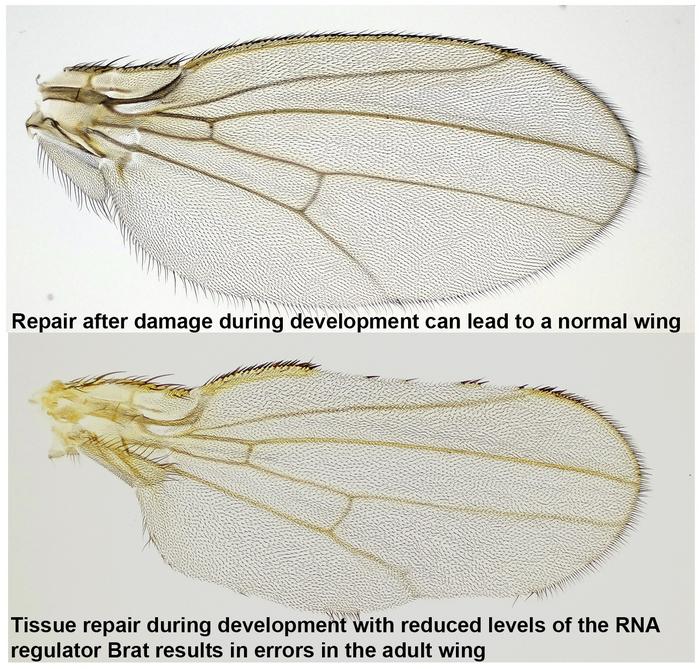Tick-borne Powassan virus is being transmitted in concentrated clusters in New England, Yale study says
A new study by investigators with the Yale School of Public Health (YSPH) finds that the tick-borne Powassan virus is being transmitted in concentrated community clusters throughout New England. Credit: Chantal Vogels A new study by investigators with the Yale School of Public Health (YSPH) finds that the tick-borne Powassan virus is being transmitted in […]

A new study by investigators with the Yale School of Public Health (YSPH) finds that the tick-borne Powassan virus is being transmitted in concentrated community clusters throughout New England.

Credit: Chantal Vogels
A new study by investigators with the Yale School of Public Health (YSPH) finds that the tick-borne Powassan virus is being transmitted in concentrated community clusters throughout New England.
The findings could help local health officials focus their efforts in eradicating the Powassan virus and preventing Powassan infections.
There are currently no vaccines or treatments for Powassan virus infection. Prevention is primarily dependent on education and control. Most people infected with Powassan do not experience symptoms, but for some, it can result in brain swelling and even death.
“It’s incredibly important to do surveillance to know what’s out there,” said Chantal Vogels, a research scientist in the Department of Epidemiology of Microbial Diseases at YSPH and a co-first author of the study.
By greatly expanding on what little genomic information scientists had before our study, Vogels said, “we were able to explore patterns of transmission and spread and unravel the ecology of the virus.”
As part of their investigation, the researchers studied 279 samples of Powassan virus lineage 2 found in deer ticks (Ixodes scapularis, also called black-legged ticks) collected in Connecticut, New York, and Maine between 2008 and 2019.
By deciphering and comparing the virus’s complete genetic codes, or genomes, the researchers reconstructed the history of Powassan in the region. They estimated when branches of the virus’s “family tree” diverged and pieced together how the virus evolved and where it traveled via its hosts.
They found that sometime between 1940 and 1975, a major branch of the lineage 2 virus appeared in the Northeast. This branch of the virus, which accounts for most Powassan cases in North America, first appeared in southern New York State and Connecticut. Then, several long-distance jumps occurred, likely when infected ticks caught rides on migrating birds or other vertebrate hosts. By 1991, it had reached Maine. During its initial decades in the region, Powassan became more populous in the wild, but this probably leveled off about 2005.
The virus now appears to be moving slowly or staying put, simmering in specific hotspots, and evolving independently in each one. For instance, the scientists could find no evidence that separate clades of the virus were mingling with each other across a 20-kilometer (or approximately 12.5 miles) stretch between two Connecticut sites. The scientists note however that they sampled only a limited number of locations so it’s possible they missed hotspots.
Still, this new information could help health officials to target hotspots — where Powassan is more likely to spill over into humans — for education and eradication efforts. In addition to New England, the virus has also been reported in high numbers in the Great Lakes region.
“If it’s anything like [the related] tick-borne encephalitis virus, [previous researchers have] estimated that these foci are typically about the size of a football field,” said Doug Brackney, a researcher in the Department of Entomology at The Connecticut Agricultural Experiment Station and, an assistant clinical professor in the Department of Epidemiology of Microbial Diseases at YSPH.
The Powassan virus is so named because the virus was first identified in a five-year-old boy from Powassan, Ontario, who developed severe encephalitis and died in 1958. After that, about one case per year was diagnosed until 2006. Then cases began to climb, and since the late 2010s dozens of diagnoses have been made nearly every year.
The Yale study appears online in Proceedings of the National Academy of Sciences.
The research was funded by the National Center for Advancing Translational Science, a component of the National Institutes of Health (NIH); the National Institute of Allergy and Infectious Diseases of the NIH; Internal Funds KU Leuven; Research Foundation – Flanders; Fonds National de la Recherche Scientifique; and European Union Horizon 2020.
Given that the virus’s numbers appear to have leveled off in the wild, this increase in human disease may have happened because more humans are encountering ticks, and/or because more health professionals are checking for Powassan in patients with suspicious symptoms.
Unlike Lyme disease, which takes hours to pass from an infected tick to a human, Powassan can be transmitted just 15 minutes after the tick latches on. More New England residents have likely been infected with Powassan than have shown symptoms.
“We typically only see the most severe cases of disease, and those are the people that end up in the hospital. But it’s probably just the tip of the iceberg,” Vogels said.
“I think it’s really important to be early with this work,” she added, “to prevent a situation where everyone has heard of this virus, and it creates a huge burden on public health.”
***
The study’s four co-first authors are Vogels; Brackney; Alan P. Dupuis II of the New York State Department of Health (NYSDOH) and the State University of New York (SUNY) at Albany; and Rebecca M. Robich of the MaineHealth Institute for Research (MHIR).
The five co-senior authors are Robert P. Smith of MHIR; Philip M. Armstrong of The Connecticut Agricultural Experiment Station (CAES); Alexander T. Ciota of the New York State Department of Health (NYSDOH) and SUNY Albany; Simon Dellicour of KU Leuven and Université Libre de Bruxelles, both in Belgium; and Nathan D. Grubaugh of the Department of Epidemiology of Microbial Diseases, Yale School of Public Health, and the Department of Ecology and Evolutionary Biology, Yale University.
Other co-authors are Joseph R. Fauver of the Yale School of Public Health and the University of Nebraska Medical Center; Anderson F. Brito of the Yale School of Public Health and Instituto Todos pela Saúde, São Paulo, Brazil; Scott C. Williams and John F. Anderson, both of CAES; Charles B. Lubelczyk of MHIR; Rachel E. Lange and Laura D. Kramer, both of NYSDOH and SUNY Albany; Melissa A. Prusinski of NYSDOH; Jody L. Gangloff-Kaufmann and Laura B. Goodman, both of Cornell University; and Guy Baele of Belgium’s KU Leuven.
Journal
Proceedings of the National Academy of Sciences
DOI
10.1073/pnas.2218012120
Article Title
Phylogeographic reconstruction of the emergence and spread of Powassan virus in the northeastern United States
Article Publication Date
11-Apr-2023
What's Your Reaction?

































